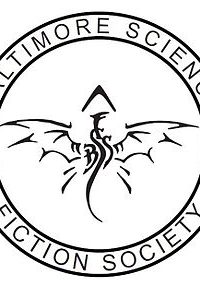Ned Dameron (1943-2022)
Artist Ned Dameron, 79, died October 20, 2022 of ALS. Dameron was best known for his book covers and interiors, and for roleplaying game artwork.
A native of Louisiana, born May 7, 1943, Edward Palfrey IV was always known personally as well as professionally as “Ned.” He was born in Rio and grew up in Hammond and Baton Rouge, and while still in high school he apprenticed as a draughtsman for an architect, thinking that would be his career. He enrolled in 1961 at the Tulane University School of Architecture in New Orleans, but by 1963 was studying painting with the Abstract Expressionist painter Ida Kohlmeyer at Tulane’s Newcomb School of Art.
After studying sculpture and figurative realism with major artists at the school, Ned graduated with a BFA in 1966, with sculpture as his major. During this period he was art director for a small intermedia theater in New Orleans, designing costumes, giant puppets and sets, and contributing sequential art to underground publications. Dameron’s mother, who at one time was herself an art major in college, by 1969-1970 had an art gallery in New Orleans, and dealt in contemporary European paintings — many of which were of the fantastic school. This gave him the idea for painting in a similar vein. After graduation he worked for an advertising agency then turned to easel paintings for local galleries, and freelance illustration painting under the name “Arthur Amber.”
Dameron lived and painted in San Francisco 1977-1979 and was influenced by the then-emerging style sometimes called California Visionary. After some success as a gallery artist, including participating in the World Surrealist Exhibition, Chicago 1976, and a two-man show at the Will Stone Gallery in San Francisco, 1979, he moved to the Washington DC area, where he exhibited his personal works, while taking freelance assignments in the science fiction and fantasy genre.
Through the 1980s and into the 1990s, Dameron’s mix of romanticized architectural backgrounds, old-world style, and colorful palette were a good match to the sorts of literary projects undertaken by specialty house publishers, especially the fully illustrated high quality hard-cover book, published in limited quantities for collectors. Almost all his commissions during that time came from two publishers, Donald M. Grant and Underwood-Miller. For their publications he produced cover art, as well as numerous full color plates and black-and-white drawings for interior illustrations, numbering in the dozens for each book. His illustrations for books by Robert E. Howard, Edgar Rice Burroughs, and Stephen King for Grant were especially notable, among them Ned Dameron’s Waste Lands Portfolio: Illustrations from the Donald M. Grant, Publisher, Inc. Hardcover Edition of Stephen King’s The Dark Tower III: The Waste Lands (1991).
In the mid-1990s Dameron moved back to Louisiana, and into producing art for role-playing games, finding the same opportunity there to build a freelance relationship with one major client (TSR), which similarly demanded the production of a high volume of interior illustrations. He is particularly known for his highly detailed renderings of RPG characters associated with Dungeons & Dragons game worlds, which ranged from Dungeon Master Guides to Sourcebooks, Players Handbooks, Rulebooks, campaigns, accessories, adventure modules, and boxed sets. Unlike other game artists, however, Dameron was relatively uninterested in gaming and rarely if ever attended genre or industry conventions.
Dameron worked in oil on canvas or illustration board, pen/ink on scratchboard, and sometimes with acetate overlays, to gain the effect he desired. For his gaming illustrations he mainly worked in watercolor and gouache with acrylics. What set him apart from his contemporaries was his signature style of expression; he aimed for a personalized style in the manner of 19th-century academic and 20th-century art nouveau and surrealist painters.
He sculpted the base for the 1988 Hugo Award, for the World Science Fiction convention in New Orleans (Nolacon II), an honor usually accorded an artist who resides in the host city, and also provided the illustrations for their program and souvenir book. Dameron’s work was included in the exhibition “Science Fiction and Fantasy Painters,” and in the illustrated catalog for that show, at the New Britain Museum of American Art, in Connecticut 1980, which holds several of his paintings in their collection. An unpublished work, “Mortality of the Proton”, was featured in a Spectrum anthology (1992). He was nominated for a World Fantasy Award in 1992.
When gaming commissions waned in the late 1990s, Dameron turned back to literary small press and private commissions, the latter primarily involving portraiture and figurative bronze sculptures based on Old and New World myths. His last commercial project was a set of illustrations for an upcoming limited edition of Stephen King’s The Stand for Cemetery Dance.
Dameron has biographical entries in Jane Frank’s Science Fiction and Fantasy Artists Of The Twentieth Century (McFarland, 2009) and Role-Playing Game and Collectible Card Game Artists (McFarland, 2012), and a website, currently maintained by his family and friends, shows several examples of his work (see <www.neddameron.com>). A number of his original paintings are available through Worlds of Wonder Art (<www.wow-art.com>).
He is survived by his wife of many years, Eleanor, professionally known as Eleanor Ellis, noted acoustic blues guitarist and historian.
—Jane Frank





